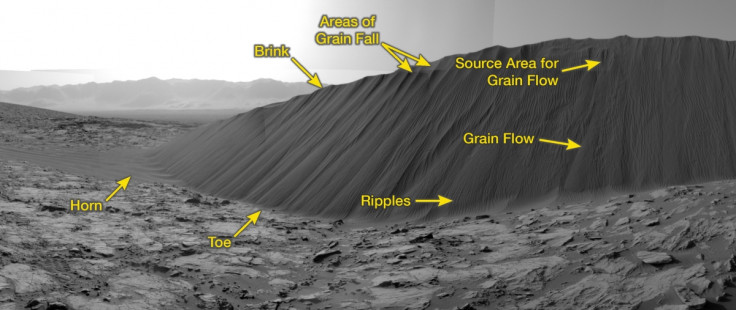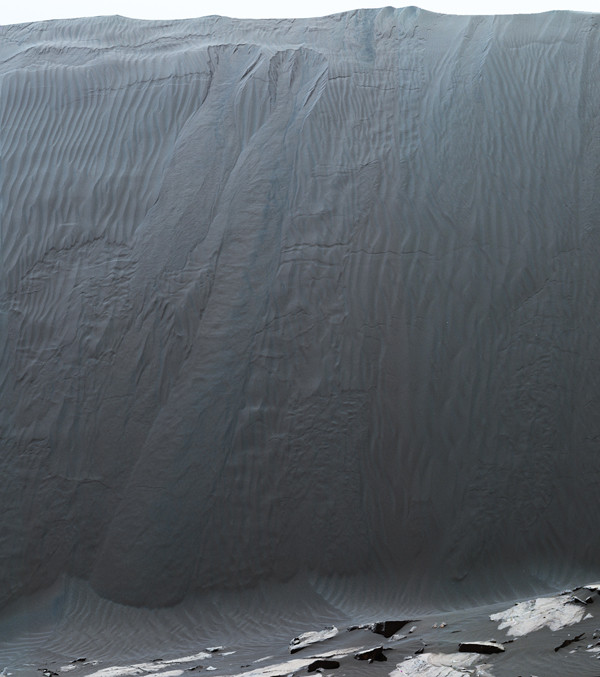Nasa's Curiosity Rover sends back panoramic, important images of Mars' Bagnold Dunes
Nasa's Curiosity Mars Rover has sent back pictures of extra-terrestrial sand dunes in the first ever study of the sand sculptures. The Rover sent back panoramic photos and finely-detailed images of the dunes on the surface of Earth's neighbour.
Curiosity has been researching a series of sand dunes, known as the Bagnold Dunes. These dark sculptures will help scientists at Nasa understand how the wind on Mars moves without Earth's gravity, and how it affects the environmental surroundings.
The Bagnold Dunes show huge downward slopes, which sets the sculptures apart from just a small, wind-made structures. On this slope, sand can avalanche down the dunes from the wind's influence.
Curiosity has not managed to record one of these avalanches – or sand slides – yet, but the images it sent back does show where these slides have occurred in the past. Experts suggest they are more frequent in Mars' southern summer.

This panoramic photograph shows Namib Dune, from the Bagnold Dunes. Captured on December 18, 2015, the photograph faces downwind.
Experts at Nasa have used trigonometry to estimate the height of the dune at around 16ft (5m) from top to bottom – about 21 times smaller than Europe's largest sand dune, the Dune of Pilat.
The photograph below shows the same sand dune, but much closer. This is the closest to an alien sand dune a rover has ever been. Ripples in the dunes face show where sand slides have occurred in the past.


Finally, this photo was taken from Curiosity to show the finer detail of the dune. Scientists even managed to adjust the colour of the image, so that it appears on screen as it would do in daytime on Earth. Maybe a day at the beach would not seem as appealing with grey dust in place of bright, yellow sand?

© Copyright IBTimes 2025. All rights reserved.





















